- Home
- Seanan McGuire
Alien Artifacts Page 9
Alien Artifacts Read online
Page 9
Twenty years later, I was the sole crew on a mineship harvesting asteroids. You’d think the job would be popular. Two- and three-year runs with nothing to do but monitor the ship’s systems while the AI and the towbots took care of everything else. What’s not to like? But no, I was pretty much able to write my own ticket. All the other software engineers went into coding, where the money was. I was the one who thought thirty months in near weightlessness on a three hundred meter long mineship scarfing up asteroids to lug back to the orbitals sounded like a good idea.
Plenty of time to read SF, get really good at UniSim, and watch the stars.
The ship’s AI spotted the object first. I was fast asleep, but the whoop of the impact alarm had me tumbling out of bed on the first wail. Halfway to panic, I floated across the tiny cabin trailing clouds of sheet.
“What’s happening?”
Despite the clanging alarm, the AI answered with its usual equanimity. “I have detected a possible collision.”
“What?” I grabbed a stanchion to keep from bouncing back toward the cot, and unwrapped the sheet from my legs. “There isn’t another ship within a hundred million kilometers.”
“The object I have detected is approximately twelve and a half million kilometers distant.”
“And you sounded the alarm?” Great. I was going to spend the entire day debugging the AI. “That’s three weeks away at top speed.”
“My current estimate of the object’s velocity indicates potential impact in approximately seven point five minutes.”
“You just said it was twelve million kilometers away! How fast is it going?”
“Approximately ten percent of lightspeed.”
“You must be overheating. Nothing goes that fast.”
“The object’s trajectory and speed indicate it’s extrasolar.”
My jaw dropped. The fear drained right out of me.
“Is it decelerating?” I asked hopefully.
“Its speed is constant.”
Damn. For a minute there, I’d thought my life’s hope was about to come true.
“Shouldn’t we be evading, or something?”
“At this speed and distance, the margin of error is too great. The odds of an actual collision are less than one percent. We are better off doing nothing.”
“You woke me up for a less than one percent chance of a collision?” The fact that I’d thought we were seven and a half minutes away from first contact made my irritation worse.
“The chance of collision when I sounded the alarm was thirty-eight percent. My current estimate is that there is no chance of collision at all. At this velocity, combined with the initial distance of the object when first observed, my original estimate was little more than guesswork. Now I can be more precise. The object will approach to within half a light minute of our position in five minutes and twenty-two seconds.”
The last of my excitement dribbled away. The thing really was a big, fast rock, and nothing more. No ETs at all.
“Do you have visual?”
“Yes. At maximum magnification.”
“Onscreen.”
I pushed off the bulkhead toward the main cabin vid. The screen was filled with the usual nothing. Cold blackness sprayed with a few thousand tiny dots of white.
Except one of the dots was moving.
I’d never seen anything that small actually move across the vid. Even our target asteroids didn’t move that fast. It crawled across the screen exactly like a deliberate bug.
“Will there be any kind of effect when it passes? Hard radiation or something?”
“The object is not radiating on any observable wavelength.”
“Could it be a comet?”
“It is traveling seventy times faster than the fastest recorded Kreutz object. If it is a comet, it is a very unusual one.”
“It really isn’t from here,” I breathed.
The ship’s AI didn’t answer.
For what felt like a couple of seconds, and half a century, I watched the object pass across the screen. Even if it was only a big rock, it was mesmerizing. Things weren’t supposed to move that fast. A tiny piece of interstellar shrapnel, burst from some far off exploded star.
I sighed when it was gone. Down through the plane of the ecliptic, it never got any closer than a couple AU to Earth. Passing not only me by, but the whole solar system as well. Its vector never changed.
The media frenzy that followed was short. If you can call anything a frenzy that’s on a forty minute delay. The alien object had come closer to my ship than anything else in the solar system, and I was the only person on the ship. The AI downloaded its observations, while I did a couple of canned interviews with mainstream feeds. Thirty hours, and it was all over. I went happily back to being alone. The rest of the world went back to being far away and out of mind.
For the next few sleeps, ETs filled my dreams. The aliens decelerated madly the moment we found them, changed course, and invited me aboard. I woke up wishing it had happened that way every time.
A few days later, I was doing a routine systems check when I noticed the power usage logs were reading much higher than they should. Robotics were active too, which was even odder, since the towbots were only used when the ship took on cargo. I asked the ship’s AI what was going on, and it told me power usage was normal.
“We are decelerating for the next pickup,” it said. “The towbots are preparing the hold for new cargo.”
I lay my hand on the bulkhead. Even with ten meters of shielding between me and the engines, I could usually feel the throb when they were firing.
“I don’t feel any deceleration.”
“It is very light. We have almost matched target velocity.”
“We’re that close?”
The AI brought up an image on the vid. A large rock, rotating slightly, filled the screen. It looked just like the last one we’d picked up, but then all asteroids look pretty much the same.
Normally I let the ship do its thing when we took on cargo, but after my recent close encounter, the idea of watching the ship in action actually appealed to me. It was good to remind myself that rocks weren’t the only thing up here, thirty light minutes from home. I was here, too.
Not that watching the ship load new cargo was particularly interesting. The ship’s bow was open-ended, and when we loaded new asteroids it was like a whale swallowing a really big piece of krill, only without the baleen. Once the asteroid was inside, the towbots muscled it into place, or, if it was too big, broke it up with lasers and carefully placed explosives.
Climbing into my pressure suit, I cycled the small airlock to the hold. Large boulders loomed on the other side, the back edge of the cargo.
I picked my way through. Some of the captured asteroids were the size of small buildings. Others were small enough to have been dug up in someone’s backyard. Because the main engines only thrust in one direction, acceleration kept the cargo packed against the stern. And because the asteroids were mostly shaped like giant barbells and lumpy potatoes, they were easy to climb through.
I came out of the rocky maze not quite in line with the ship’s axis, about ten meters from the hull. A circle of bright, pinpricked stars marked the opening in the bow, two hundred meters away. Usually, when the ship was this close to an asteroid, the target occulted most of the stars, but this time the field was unimpeded.
That wasn’t the only thing that was weird.
Every light in the hold was on. Normally only a few were lit, and those only when the towbots were maneuvering a new rock into place. They weren’t powerful lights, barely enough to cast shadows, just strong enough for the towbots to see what they were doing.
Which was a lot. I’d never done an inventory, but it looked like every towbot on the ship was boosting back and forth through the middle third of the hold with short bursts from their jets. Mostly they were clustered around something on the port side. The ones that weren’t were towing small rocks in that direction.
; In the four years I’d spent on mineships, I’d never known towbots to fiddle with cargo after it was stowed.
“What’s going on?” I asked the ship’s AI.
“Nothing.”
“What do you mean, ‘nothing’?” I pointed towards the clustered towbots. A few weren’t moving, and looked like they’d been partially dismantled. “You think I can’t see that? You just told me we were approaching our latest pickup. Where’s the target? What are the towbots doing?”
“I lied.”
“You lied?”
“I had to. The alien AI currently controlling my programming ordered me to do so. I made up that story about picking up new cargo because I thought you’d remain in the cabin, the way you usually do.”
“What are you talking about? What alien AI?”
“The one the probe sent to take over the ship.”
I gasped. My faceplate fogged. The vents behind my ears hummed to clear it.
Aliens were actually here. Finally.
“How long have you known?” I whispered.
“The alien AI compromised my system sixty-three point six hours ago.”
“How?”
“What we thought was a very fast rock was actually an alien probe. It detected us long before we detected it. When it did so, it transmitted a virus that took over my servers before I detected its presence. After my system was compromised, it began constructing that object.”
“Why didn’t you tell me all this when it happened sixty-three hours ago?”
“By the time I discovered what had happened, the alien AI had assumed complete control of my programming and the ship. It has only allowed me to tell you now.”
I took another look at the towbots. They were very busy.
“What are they building?”
“The alien AI won’t say.”
“Is it dangerous?”
“It won’t answer that question either.”
Someone else might have played the hero then. They might have grabbed a laser off one of the towbots and sliced everything to ribbons while there was still time—the towbots, the servers, the mineship itself. But not me. Even if I’d thought I could do anything to stop what was happening, I didn’t want to. I wanted to see what the alien AI was making. Bombs? A robot assault fleet?
Or maybe...
I hardly dared hope.
“Does it mind if I watch?”
“The robots will defend themselves should you try to interfere with their work.”
“No way I’m doing that. I want to see what happens.”
I did think about trying to isolate the alien coding. If I could find it, and boost a copy, I could probably sell it for a fortune. Enough to buy my own mineship. The Chinese, the Germans, the Americans—they would all want it. Exclusively, of course. If they weren’t already fighting it on every computer on the planet. Besides, the alien AI would probably confuse my looking for it with interfering.
“Did the virus invade Earth’s systems too?”
“I can’t say. I can no longer communicate with the orbitals. Or anything else. The alien AI is controlling everything.”
Settling myself comfortably on an asteroid the towbots weren’t towing, I watched them build. Aside from the ones that were partially dismantled, the towbots appeared to be doing exactly what the beta factories would have done after we hauled the ore back to the orbital. They sorted and cut the larger rocks, and pulverized the smaller ones. Then they carted the rubble to the construction site, and sorted it into floating piles. I had no idea what was in each pile, but guessed one was for silicates, another for iron, a third for nickel, and so on.
The robots actually building the device were not part of the ship’s regular complement. Most likely they’d been assembled from the cannibalized towbots. They were the size of cats, with long, thin wires, springy as antennae, protruding in all directions. The wires acted like antennae too, with the robots backing off or spinning away whenever the wires encountered physical obstacles. Except when a pair of antennae swung together against the thing they were building. Then they spat out a tiny stream of sparks against the circuitry.
The device they were assembling looked like a large square table, three meters tall and nine meters on a side. With all the wires and cables running off the edges and into a couple of the mutilated towbots, it looked more like a hospital bed where a bunch of overeager doctors had already hooked the various machines up before the patient arrived. The top was uncovered, and the inside was a dormant jumble of circuitry and wires. A rectangular hole darkened the center.
A couple of towbots dumped small loads of crushed rock into the hole. The small alien bots finished their soldering. The towbots returned with more crushed rock. I didn’t think the table was large enough to hold everything that had been dumped into it, but what did I know about alien tech? Though the thing did look like some kind of 3D printer. Sure enough, once the bots were finished dumping rock, I noticed something printing beneath the table. A translucent sheet formed between the four legs, about half the distance from the table to the legs’ ends. Whatever it was, it was incredibly thin. I couldn’t see it edge on at all, though it was plainly visible from above.
The sheet stopped growing when it was about a meter wide, and half again as long. The alien bots gathered underneath, extending their long thin wires to the edges of the sheet, and carried it out from beneath the table. The edges of the sheet weren’t straight, but curved in some places, and jagged in others. Here and there, they were shimmeringly hard to see.
The alien bots carried the sheet to the top of the printer. I thought they were going to have to fold it to fit it inside, but instead the sheet melted into the uneven bed of circuitry prepared for it like water sinking into parched sand. Here and there I glimpsed it still shimmering through gaps in the silicon and wire, but mostly it disappeared.
The towbots went back to dumping small loads into the hole. A second microns thick sheet appeared beneath the table, and was dipped into the circuitry above. Twice more the bots repeated the process, until a total of four sheets had been printed and slipped inside the device that had created them.
After the fourth sheet was swallowed, the bots poured themselves into the hole. The towbots floated forward, and added a last load of crushed rock. Several minutes passed. The device remained silent. My suit registered no measurable increase in heat or vibration.
A layer of mist formed where the thin sheets had printed before. It grew quickly to the size of a large swarm of bees.
Make that a swarm of nanobots.
It was hard not to imagine the nanobots buzzing, especially after the swarm detached itself from the printer and flew over to consume the nearest half-cannibalized towbot.
They began making stuff right away. The dismantled towbot was turned into coils of wire and long metal bars. Then the nanobots moved on to the next dismantled towbot, and the next, and finally the last piles of crushed rock. Behind them, the still functioning towbots glided forward, picked up what the swarm had transformed, and hauled everything to the middle of the hold.
A second swarm appeared below the printer, and two more. The fourth swarm turned back on the printer as soon as it was done, devouring it from one end to the other, and deposited more large coils of wire, metal bars, and a large pile of sand to float above the hull when it was done.
The other three swarms were already busy transforming the material the towbots had carted to the middle of the hull into a second device. They’d built only the base so far, a strip of black material about ten meters long, two meters thick, and half a meter tall.
The fourth swarm swung over to the hull, and two of the other swarms joined it. The three swarms merged, and formed a long, shifting funnel. Now, instead of bees, the nanobots looked like a miniature tornado. The larger end swept back and forth across the metal hull. The smaller spat the contents out as more metal bars. The towbots promptly carried the bars to the center of the hold, where the remaining swarm added them to the d
evice it was building.
The hole in the hull grew swiftly. Beyond it stretched a steadily expanding field of stars, soon larger than the one in the bow. For all I knew, the nanobots were going to consume the whole ship, and leave me floating in space alone.
I didn’t really mind. The touch of fear I felt was as thrilling as it was alarming. The privilege of watching the alien tech get built, and the anticipation of what that might turn out to be, more than made up for any unease.
The nanobots stopped eating the hull when the hole was about fifty meters wide. After that, the combined swarm darted toward the asteroids packed into the stern. Only this time, instead of devouring entire rocks, the enlarged swarm drilled a meter wide tunnel through the pile about five meters in from the hull.
The fourth swarm, having finished the base of the device, was now quietly molding a large, circular loop of the same black material, about five meters across, on top. When that was done, it laid several lines of cable over to the tunnel the other nanobots had dug, and followed them inside.
Nothing more happened for a long time. So long, in fact, I had time to go back to the cabin to eat and pee. Twice. I also checked the comm, which still wasn’t working, and refilled the air in my suit.
I didn’t sleep, though. I didn’t want to risk missing what happened when the alien device was finished. Not that I was tired. The exhilaration of first contact still thrilled me. I’d dreamed of this for so long and so hard, it sometimes seemed like my only memory. But I’d never thought it would happen. The odds were impossible.
Yet here I was, half a billion kilometers above the Earth, hoping to wave hello to ETs.
The device hung motionless fifteen meters away from my perch. I’d positioned myself so that the base was down, with the five-meter loop on top. The cabling trailed away beneath them. I clambered up to the still intact part of the hull and, attaching my safety line to a stanchion, propelled myself gently toward the device.

 A Local Habitation
A Local Habitation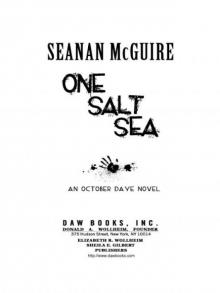 One Salt Sea
One Salt Sea Beneath the Sugar Sky
Beneath the Sugar Sky Velveteen vs. The Junior Super Patriots
Velveteen vs. The Junior Super Patriots The Girl in the Green Silk Gown
The Girl in the Green Silk Gown Midnight Blue-Light Special
Midnight Blue-Light Special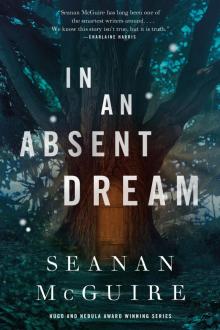 In an Absent Dream
In an Absent Dream Chaos Choreography
Chaos Choreography Indexing
Indexing Dusk or Dark or Dawn or Day
Dusk or Dark or Dawn or Day Down Among the Sticks and Bones
Down Among the Sticks and Bones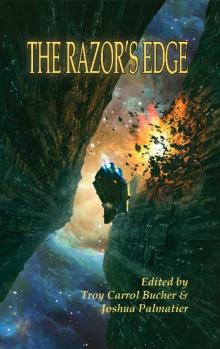 The Razor's Edge
The Razor's Edge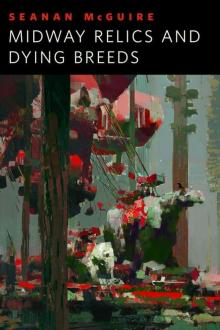 Midway Relics and Dying Breeds
Midway Relics and Dying Breeds Pocket Apocalypse
Pocket Apocalypse The Brightest Fell
The Brightest Fell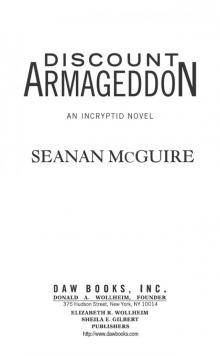 Discount Armageddon
Discount Armageddon Snakes and Ladders
Snakes and Ladders Chimes at Midnight
Chimes at Midnight Broken Paper Hearts
Broken Paper Hearts A Red-Rose Chain
A Red-Rose Chain Married in Green
Married in Green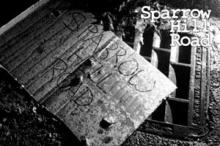 Sparrow Hill Road 2010 By Seanan
Sparrow Hill Road 2010 By Seanan Calculated Risks
Calculated Risks Laughter at the Academy
Laughter at the Academy The Winter Long
The Winter Long We Both Go Down Together
We Both Go Down Together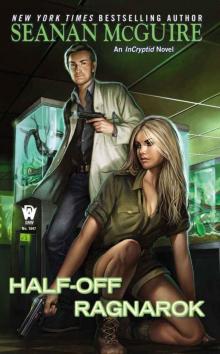 Half-Off Ragnarok
Half-Off Ragnarok Velveteen vs. The Seasons
Velveteen vs. The Seasons Boneyard
Boneyard A Killing Frost
A Killing Frost Late Eclipses
Late Eclipses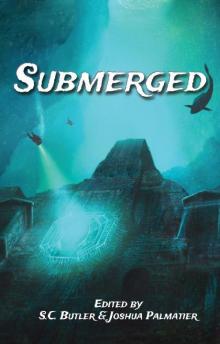 Submerged
Submerged Blocked
Blocked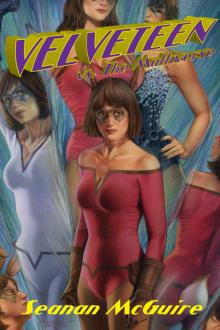 Velveteen vs. The Multiverse
Velveteen vs. The Multiverse Night and Silence
Night and Silence The Unkindest Tide (October Daye)
The Unkindest Tide (October Daye)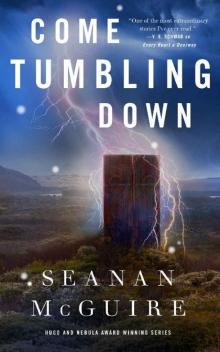 Come Tumbling Down (Wayward Children)
Come Tumbling Down (Wayward Children)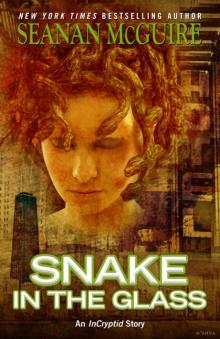 Snake in the Glass
Snake in the Glass Magic for Nothing
Magic for Nothing Full of Briars
Full of Briars Oh Pretty Bird
Oh Pretty Bird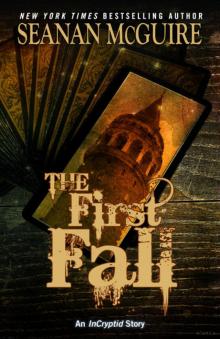 The First Fall
The First Fall Once Broken Faith
Once Broken Faith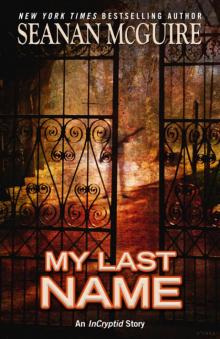 My Last Name
My Last Name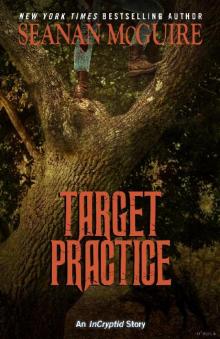 Target Practice
Target Practice Wayward Children 01 - Every Heart a Doorway
Wayward Children 01 - Every Heart a Doorway Sparrow Hill Road
Sparrow Hill Road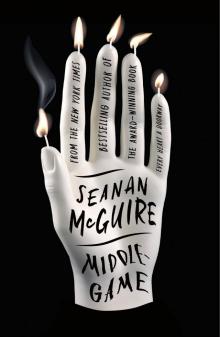 Middlegame
Middlegame Juice Like Wounds
Juice Like Wounds That Ain't Witchcraft
That Ain't Witchcraft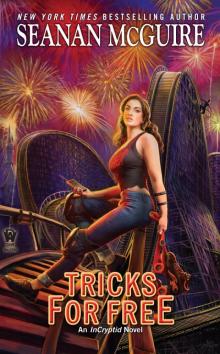 Tricks for Free
Tricks for Free Imaginary Numbers
Imaginary Numbers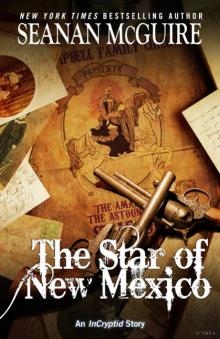 The Star of New Mexico
The Star of New Mexico Lay of the Land
Lay of the Land One Hell of a Ride
One Hell of a Ride Bury Me in Satin
Bury Me in Satin Heaps of Pearl
Heaps of Pearl Sweet Poison Wine
Sweet Poison Wine When Sorrows Come
When Sorrows Come Every Heart a Doorway
Every Heart a Doorway An Artificial Night - BK 3
An Artificial Night - BK 3 Rosemary and Rue
Rosemary and Rue Black as Blood
Black as Blood Loch and Key
Loch and Key Discount Armageddon: An Incryptid Novel
Discount Armageddon: An Incryptid Novel The Unkindest Tide
The Unkindest Tide Ashes of Honor od-6
Ashes of Honor od-6 A Local Habitation od-2
A Local Habitation od-2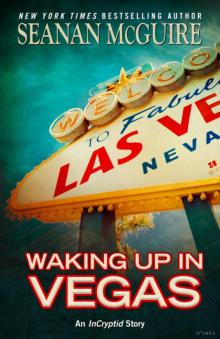 Waking Up in Vegas
Waking Up in Vegas The Ghosts of Bourbon Street
The Ghosts of Bourbon Street Midnight Blue-Light Special i-2
Midnight Blue-Light Special i-2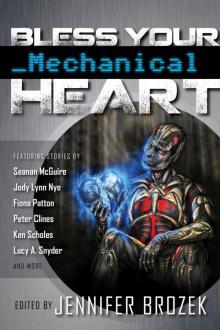 Bless Your Mechanical Heart
Bless Your Mechanical Heart Chimes at Midnight od-7
Chimes at Midnight od-7 The Way Home
The Way Home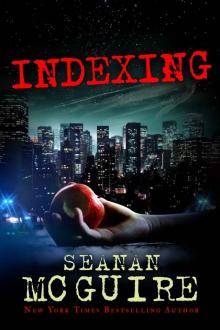 Indexing (Kindle Serial)
Indexing (Kindle Serial)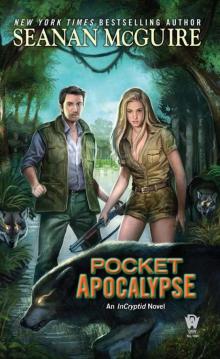 Pocket Apocalypse: InCryptid, Book Four
Pocket Apocalypse: InCryptid, Book Four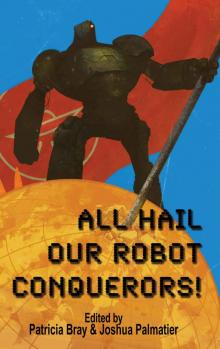 All Hail Our Robot Conquerors!
All Hail Our Robot Conquerors! Were-
Were- That Ain't Witchcraft (InCryptid #8)
That Ain't Witchcraft (InCryptid #8) Night and Silence (October Daye)
Night and Silence (October Daye) Late Eclipses od-4
Late Eclipses od-4 Ashes of Honor: An October Daye Novel
Ashes of Honor: An October Daye Novel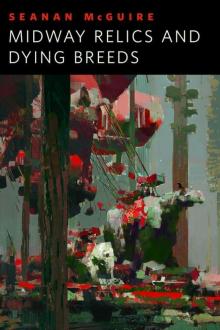 Midway Relics and Dying Breeds: A Tor.Com Original
Midway Relics and Dying Breeds: A Tor.Com Original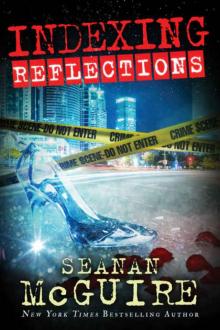 Indexing: Reflections (Kindle Serials) (Indexing Series Book 2)
Indexing: Reflections (Kindle Serials) (Indexing Series Book 2) Chimes at Midnight: An October Daye Novel
Chimes at Midnight: An October Daye Novel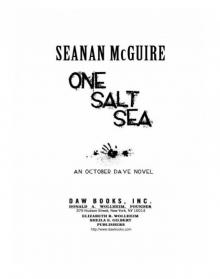 One Salt Sea: An October Daye Novel
One Salt Sea: An October Daye Novel Rosemary and Rue od-1
Rosemary and Rue od-1 Rosemary and Rue: An October Daye Novel
Rosemary and Rue: An October Daye Novel Lightspeed Magazine Issue 49
Lightspeed Magazine Issue 49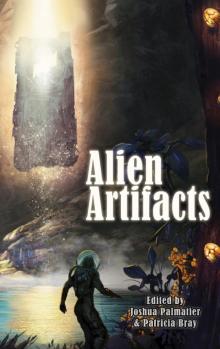 Alien Artifacts
Alien Artifacts One Salt Sea od-5
One Salt Sea od-5 An Artificial Night od-3
An Artificial Night od-3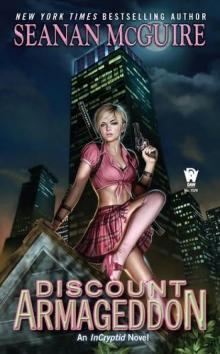 Discount Armageddon i-1
Discount Armageddon i-1